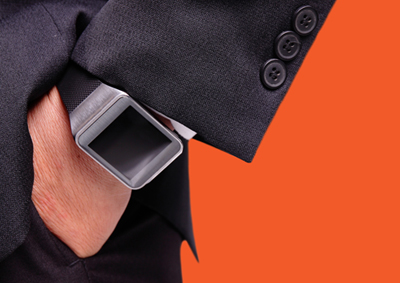
The wearable technology market is beginning to gain traction with consumers and in the enterprise. A wide range of fitness tracking gadgets has hit the market already and they’re generating new data streams that represent huge untapped potential. Many of the big mobile players are unveiling smart watches and we’re seeing other categories like smart glasses offering unique solutions to common business problems.
“In 2013, the global smartwatch industry reached a global market volume of USD 700 million, ten times the size of 2012. In 2014, the industry will grow to USD 2.5 billion – 5% the size of the watch industry. In the years to follow, the smartwatch industry will keep growing at a 3-digit rate,” said Pascal Koenig, managing director of the Smartwatch Group, to Forbes earlier this year.
We haven’t seen growth like that since the smartphone took off and the rise in wearables has similar implications for the enterprise. The BYOD trend brought productivity boosts and enabled mobile workspaces that would have been impossible before the smartphone. The challenge was to manage security and compliance issues without creating barriers for employees accessing work systems around the clock from any location.
Extending the smartphone
The majority of the first wave of wearables will be tethered to smartphones and tablets. Trackers, watches, and glasses can extend the usefulness of mobile technology. The right wearable will dictate smartphone choice, as the iWatch will only work with the iPhone, the Moto 360 will only work with an Android. They can harvest useful personal data that can be analyzed to provide real insights for any business. They also allow for information to be presented to the user in new ways.
Augmented reality has huge potential to guide employees with everything from basic navigation to complex repair procedures, and wearables represent a better delivery system than smartphones or tablets. Information overlays, video, and audio streams through wearables could dramatically reduce training costs. Augmented reality can also increase efficiency and reduce the scope for human error. This is about more than the hardware, though. Software will really unleash the potential.
Feeding data into enterprise apps
It was the app revolution that drove smartphone adoption and there’s a thriving market in enterprise apps that enable companies to collaborate and administer every facet of their business. As cognizant computing takes off and we begin to generate more complex personalized data streams establishing secure mobility solutions that connect wearables, smartphones, and enterprise apps together seamlessly becomes vital.
“By 2017, Gartner predicts that wearable devices will drive 50 percent of total app interactions,” suggested research director Brian Blau in a Gartner press release.
Mobile workspaces are all about freeing employees to collaborate and get productive with any device wherever and whenever they are able. From the desktop to the laptop, from the smartphone to the smartwatch, bringing useful hardware together with purpose-built enterprise apps can take businesses to the next level. But it must be handled carefully.
Privacy could be a thorny issue for employees. Will they accept tracking by company devices or be comfortable allowing employers to access their own wearables? There has to be a clear divide between work and personal lives. A holistic view is required that caters for security, provides management tools and oversight, and delivers a truly agile mobile workspace. Starting with a well thought out Enterprise Mobility Management (EMM) policy will boost the chances of success.
Managed mobile solutions
While wearable technology certainly brings new possibilities, much of the potential is yet to be tapped. Hardware will evolve and software will be written to leverage it to maximum advantage, but the enterprise needs to prepare today. With consumer interest already piqued, it’s only a matter of time before wearables are flooding into workplaces and being tethered to mobile devices with workplace access.
Companies can’t afford to ignore the incoming tide, just as they couldn’t with smartphones and tablets. A bit of forward thinking can harness wearables as the next wave in the BYOD trend. There’s no fundamental shift here in the way the technology works or accesses data. In fact the heavy reliance on existing mobile hardware and software for pioneering wearables should help to ease the transition. An end-to-end system building on EMM policies to secure devices, applications, and data can certainly encompass wearables.
A safe and secure foundation will enable wearable technology to proliferate inside the enterprise without the uncertainty and challenges that accompanied the original BYOD trend. A mobility solution like Fujitsu’s Managed Mobile powered by Citrix XenMobile Enterprise can ensure secure mobile workspaces, leaving businesses free to explore the potential of wearable technology, keeping the focus on increased productivity and delivering business value for customers.













